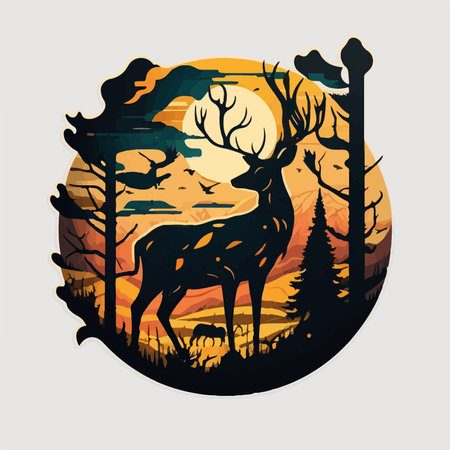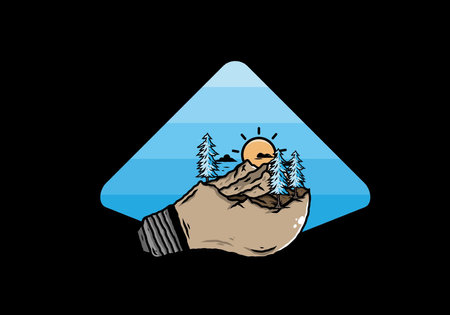1. Introduction: Walking Through Fire
Imagine setting out for a peaceful hike in America’s iconic wilderness, only to find yourself racing against roaring flames and choking smoke. This is the reality that many hikers across the United States have faced as wildfires become more frequent and intense. Their stories are not just about survival—they offer an up-close look at how America’s wild places are changing forever.
The Heartbeat of the Wild: Hikers’ Personal Stories
Meet Sarah from California, who was trekking through the Sierra Nevada when the sky turned orange and ashes began to fall like snow. Or consider Mike, a seasoned backpacker from Colorado, who had to abandon his gear and run for safety as a firestorm swept through the Rockies. These are just two voices among thousands who have seen firsthand how wildfires are reshaping landscapes and lives.
How Wildfires Impact Hikers and Wilderness
| Hiker Experience | Emotional Impact | Environmental Change Witnessed |
|---|---|---|
| Saw flames approach trail | Anxiety, fear for safety | Trees burned, trails closed |
| Evacuated mid-hike | Shock, sense of loss | Wildlife fleeing, habitat destroyed |
| Campsite lost to fire overnight | Grief, gratitude for survival | Landscape transformed, ash everywhere |
The Changing Face of American Wilderness
For these wildfire survivors, hiking isn’t just about adventure anymore—it’s about witnessing the dramatic changes sweeping across America’s forests, mountains, and parks. From Yellowstone to Yosemite, each wildfire leaves a mark not just on the land but also in the hearts of those who love it most. Their stories remind us that every step on these trails is now a walk through history—and sometimes through fire itself.
2. America’s Wildfires: Shaping the Landscape
Wildfires have always been part of America’s wilderness, but in recent years, their scale and frequency have changed how hikers experience the outdoors. For many hikers, wildfires are no longer distant news—they’re a real and present force that reshapes favorite trails, changes scenic routes, and impacts wildlife habitats across national parks and public lands.
How Wildfires Transform the Wilderness
When a wildfire sweeps through an area, it doesn’t just burn trees. It transforms entire ecosystems. Trails might be closed for months or even years as land managers work to rebuild bridges, clear fallen trees, and make sure paths are safe again. Landscapes that were once green and shaded can become open fields of charred trunks and new growth. Here’s a look at some key ways wildfires change the hiking experience:
| Before Wildfire | After Wildfire |
|---|---|
| Lush forests with dense canopies | Open views with young plants and burned trees |
| Well-marked trails with stable footing | Trails blocked by debris, unstable ground, or erosion |
| Abundant wildlife like deer and songbirds | Shifts in animal populations; some species leave, others arrive |
| Cool, shaded hiking conditions | Hotter, sunnier hikes with less cover |
The Impact on Trails and Parks Across America
From California’s Sierra Nevada to Colorado’s Rockies, wildfires have left their mark. Iconic hikes like those in Yosemite National Park or along the Pacific Crest Trail have been temporarily closed after major fires. Sometimes trails are rerouted or permanently altered because the landscape is no longer stable.
Examples from Hikers’ Stories
- Pacific Northwest: After major fires in Oregon and Washington, hikers found familiar paths unrecognizable—tree markers were gone, and new plants were already taking root.
- California: In places like Sequoia National Park, old-growth forests suffered losses, but hikers witnessed the surprising return of wildflowers just months after fire.
- Colorado: Burn scars from recent fires created opportunities for spotting elk and other animals who moved into newly opened meadows.
A Living Wilderness: Change is Constant
If you talk to wildfire survivors—those hikers who’ve seen these changes up close—they’ll tell you: nature is always bouncing back. The landscapes may look different, but for many people on the trail, witnessing this transformation becomes part of the adventure. As America’s wilderness continues to evolve under the influence of wildfires, every hike offers something new to discover.

3. Firsthand Tales: Surviving and Witnessing the Flames
Real Stories from Hikers in the Fire Zones
For many outdoor lovers, hiking is about connecting with nature. But when wildfires hit, the wilderness can quickly turn dangerous. Here are some firsthand accounts from hikers who have survived or witnessed wildfires across America’s changing landscapes.
Lisa’s Story: Escaping the California Camp Fire
Lisa, an avid backpacker from Sacramento, was trekking through Northern California’s forests when she smelled smoke in the distance. Within hours, a wall of flames forced her to reroute and hike out faster than ever before. “I never thought I’d use my emergency whistle or compass, but that day, they saved me,” she recalls.
Lisa’s Survival Strategies
| Challenge | Strategy Used |
|---|---|
| Navigating low visibility | Used compass and map, followed creek beds to avoid getting lost |
| Staying hydrated | Filtered water from streams along the way |
| Avoiding inhaling smoke | Tied a wet bandana over nose and mouth |
Jake’s Experience: Witnessing the Rocky Mountain Blaze
Jake was on a weeklong hike in Colorado when he saw orange skies one evening. “It was like sunset at noon,” he says. He joined other hikers to evacuate together, staying calm and sharing supplies as they made their way to safety.
The Group’s Evacuation Tips
- Stay together: Don’t split up; there’s safety in numbers.
- Keep communication open: Use cell phones or walkie-talkies if available.
- Watch for official updates: Listen to rangers or alerts for evacuation routes.
- Pace yourself: Move quickly but don’t overexert—smoke makes breathing harder.
Sara’s Reflection: Aftermath of Oregon Fires
Sara returned to her favorite Oregon trail months after a wildfire. “The forest looked alien—charred trees everywhere, but also green shoots pushing up through ash.” She shared how seeing the aftermath changed her view of nature’s resilience and the need for preparedness on every hike.
4. Aftermath and Healing: The Wilderness Recovers
The First Steps: Trail Restoration and Community Efforts
After the flames die down, the healing process for both people and the wild landscapes begins. In America’s hiking communities, recovery is not just about rebuilding trails—it’s about restoring hope and connection. Local volunteers, trail crews, and outdoor organizations come together to repair bridges, clear fallen trees, and make paths safe again. These efforts often turn into community events where neighbors, hikers, and even folks who lost homes roll up their sleeves to help nature bounce back.
Trail Restoration Activities
| Activity | Description | Who Gets Involved |
|---|---|---|
| Clearing Debris | Removing burned logs, branches, and rocks from paths | Volunteers, local hikers, park rangers |
| Rebuilding Bridges | Repairing or replacing footbridges damaged by fire or floods | Trail crews, carpenters, scouts |
| Erosion Control | Placing barriers to stop soil erosion on steep slopes | Conservation groups, youth programs |
| Signage Updates | Installing new signs with safety info and trail markers | Park staff, local artists |
Nature’s Comeback: Ecological Transformation
Wildfires may seem destructive at first glance, but in many American forests and prairies, fire is part of the natural cycle. Months after a blaze, hikers start to notice green shoots pushing through blackened earth—signs that the land is healing. Fireweed blooms in bright pink carpets across scorched hillsides. Animals return as fresh grass grows. Some tree species like lodgepole pine actually need fire to release their seeds! Nature’s resilience is on full display for those who walk these recovering trails.
Common Signs of Recovery Hikers Notice
| Sign of Recovery | Description |
|---|---|
| Wildflowers Blooming | Species like lupine and fireweed quickly cover burned areas with color. |
| New Tree Growth | Pine saplings sprout from cones opened by heat. |
| Animal Activity Returns | Deer, birds, and small mammals reappear as habitats recover. |
| Mushrooms Emerge | Certain fungi thrive on post-fire nutrients. |
The Strength of Local Communities and Ecosystems
The impact of wildfire goes beyond the land—it touches everyone connected to it. Small towns near popular hiking trails often face big challenges after a major fire: closed businesses, reduced tourism, and damaged homes. But time after time, these communities show remarkable strength. Fundraisers are held for families in need. Outdoor festivals celebrate rebirth and resilience. Local guides share stories of how they’ve watched their favorite places heal—and invite others to witness nature’s comeback firsthand.
A Hiker’s Story: Finding Hope on a Changed Trail
Samantha, an avid hiker from California, shared her experience walking a trail months after a wildfire: “At first I was heartbroken by all the blackened trees,” she said. “But then I saw patches of purple wildflowers everywhere—more than I’d ever seen before! It reminded me that the wilderness always finds a way back.” For many wildfire survivors like Samantha, returning to the trails becomes a powerful part of their own healing journey alongside nature itself.
5. Lessons Learned: Wildfire Safety and Stewardship for the Next Generation
Takeaways for Outdoor Enthusiasts
Wildfires are reshaping Americas wilderness, and hikers who’ve experienced them firsthand have valuable lessons to share. As our landscapes change, its essential that everyone who enjoys the outdoors learns how to stay safe and help protect these special places for future generations.
Wildfire Safety Tips for Hikers
| Tip | Description |
|---|---|
| Stay Informed | Check wildfire alerts and local restrictions before heading out. Use apps like CalFire or InciWeb for real-time updates. |
| Plan Your Route | Avoid trails near active fires or in areas with high fire danger. Have a backup plan if your route is closed. |
| Pack Smart | Carry a mask for smoke, extra water, and an emergency map. Know your exit routes in case you need to leave quickly. |
| Leave No Trace | Avoid making campfires during dry seasons. Use camp stoves instead, and always follow local fire bans. |
| Report Fires | If you see smoke or flames, note your location and contact authorities immediately. |
How Hikers Can Be Environmental Stewards
- Educate Yourself: Learn about fire ecology and local wildlife recovery after wildfires.
- Volunteer: Join trail restoration projects to help recover burned areas and prevent erosion.
- Spread Awareness: Share your experiences with friends and on social media to encourage responsible hiking habits.
- Support Conservation Efforts: Donate to or volunteer with organizations working to protect public lands.
The Future of Public Lands Management in a Changing Climate
Lands agencies like the U.S. Forest Service and National Park Service are adapting their strategies as wildfires become more frequent and intense. Here’s what’s changing:
| Old Approach | Evolving Approach |
|---|---|
| Total fire suppression (putting out all fires) |
Allowing some natural fires to burn under control to restore ecosystems |
| Mainly focusing on firefighting resources | Investing in forest thinning, prescribed burns, and community education programs |
| Lack of coordination across agencies | Collaborating with tribes, local groups, and scientists for better land management plans |
Your Role in the New Wilderness Era
The American wilderness is changing, but hikers have a vital role to play—by staying safe, being good stewards, and supporting smarter land management. With the right knowledge and actions, we can all help ensure that these landscapes remain wild and welcoming for future adventurers.


